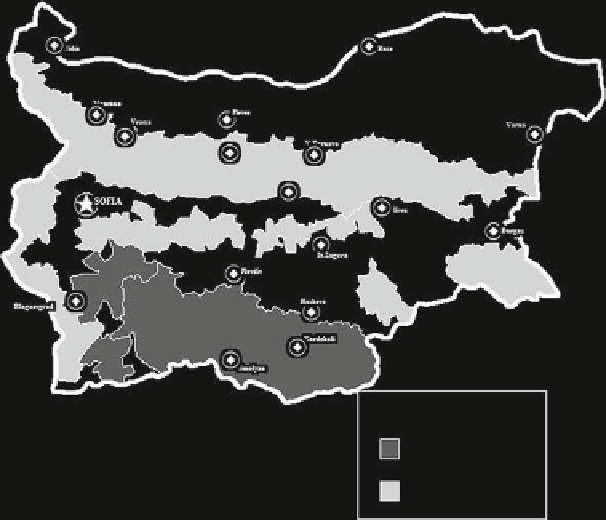Geoscience Reference
In-Depth Information
Level of ageing
Moderate
High
Fig. 13.10
Level of population ageing - 2001
The second group consists mostly of towns in the Rodopi Mountains, Eastern
Stara planina and partially Rila and Pirin mountains. This is a result of the main-
tained higher birth rates in the past, combined with lower migration mobility.
However, with the lowering birth rates and the increasing migration mobility in
recent years, the age structure of the population in those areas worsens, although
only to a moderate level. The share of population aged 0-15 in these regions varies
from 15 to 17%, while the share of population over 60 does not exceed 20% of the
total. Nevertheless, within the mountainous regions as a whole, age structures differ
a lot. In the forthcoming decades, significant negative changes are expected to occur
in the age structure of mountainous population. The share of elderly residents will
continue to grow (approximately by 2% points), while that of the younger popula-
tion will decrease (by 2.5% points). Ageing of the population will be defined mostly
by the population in Stara planina, the Rodopi Mountains, Rila and Pirin.
At the current stage of demographic development, from economic and social
point of view, the age composition of the mountainous population can be generally
described as favourable. In order to reduce the negative consequences of the ageing
process, a purposeful socio-economic policy aimed at preventing population loss in
the areas with moderately aged population is required. Those mountains and parts
of mountains in which the population age structure is extremely old would improve
their situation only by attracting younger settlers from other regions. The improve-
ment of the age structure by natural reproduction process is possible, however, that

Search WWH ::

Custom Search